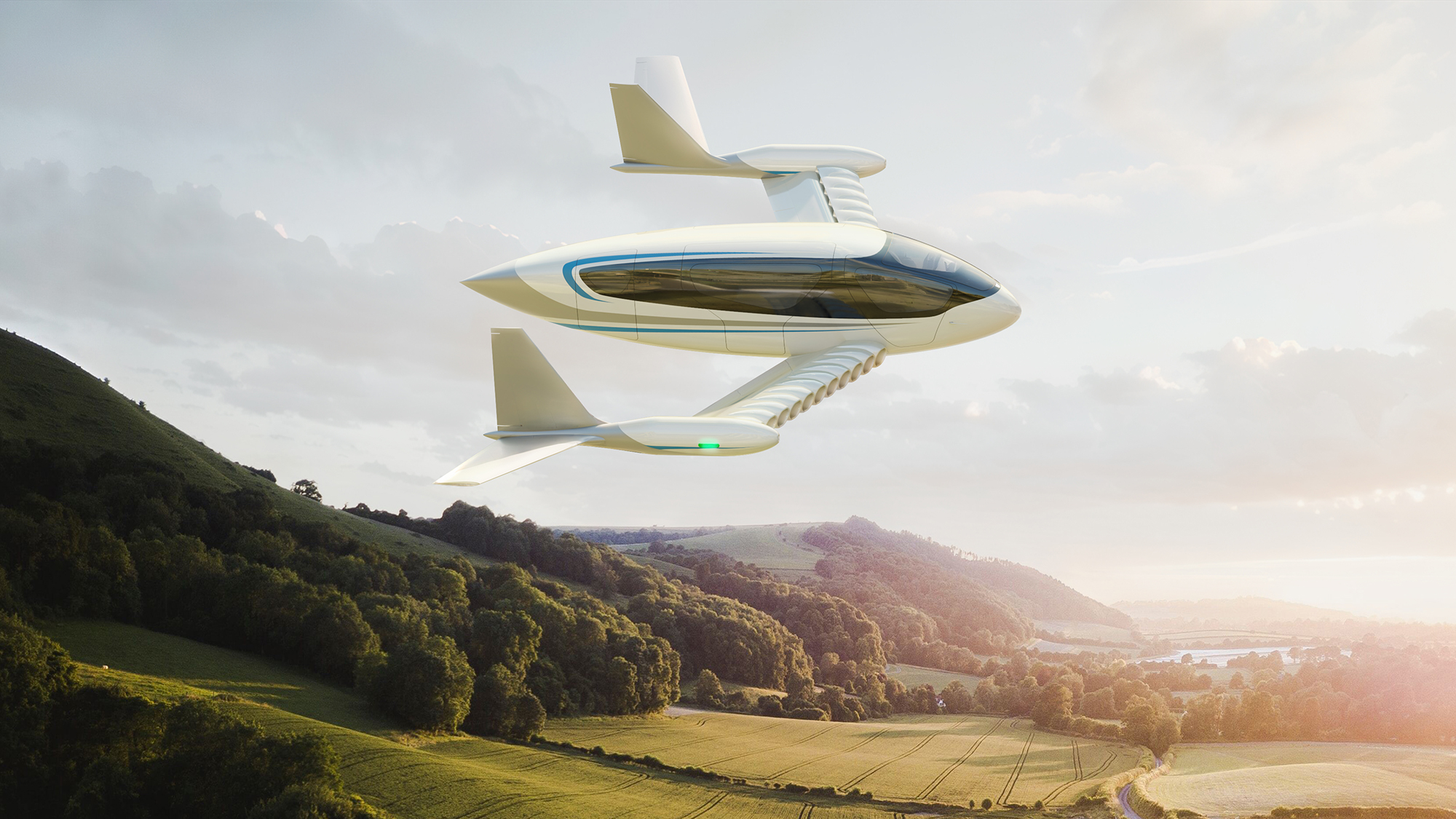

The jet engines on commercial airplanes can be absolutely huge. Technically known as turbofans, these machines have massive spinning fans in the front that create thrust by sending air out the back. One specific engine model has a fan that measures about 11 feet across. The engines burn jet fuel, create huge amounts of thrust, and are very loud.
But what if you could point a ray gun at them and shrink them way down, make them electric, and better yet, very quiet? That’s the goal of a company called Whisper Aero, which was founded in 2021. However, their propulsors aren’t intended to power large airliners. Instead, the company aims to have their innovative electric machines power military drones, perhaps a small nine-passenger jet, or even take on other, non-aerial tasks—like move the air in leaf blowers or HVAC systems.
“Whisper’s all about delivering the next generation of cleaner, quieter, more efficient thrust—for drones, for jets, and anything that moves a lot of air,” says Ian Villa, the company’s co-founder and COO. He compares the company to “an electric Pratt & Whitney, plus a Dyson, combined.” In other words, merge a maker of aircraft engines with a company famous for vacuums, and you’ve got Whisper.
[Related: The metallic guts of GE’s massive jet engines, in photos]
The company’s CEO and co-founder is Mark Moore, a veteran of NASA (and its X-57 program) and Uber Elevate, where Villa also worked. (Joby Aviation acquired Uber Elevate, which focused on flying taxis and urban air mobility, in 2020.) Moore notes that the result of the design is a “very rigid, very lightweight, high-performing fan unit.”

Technically, what the company is working on is called an electric ducted fan, which just means that a spinning fan is enclosed within a duct. (For another take on ducted fans and flight, check out Lilium.) But Whisper’s version of this device involves some tweaks. For one, the tips of the fan blades are all connected with a circular shroud. Villa compares the setup to the wheels on a bike, with the fan blades being a bit like spokes and the shroud being like the outer wheel itself. And that means that the fan blades can be held in tension between the hub they are attached to at their base, and the shroud, or rim, at their tips. “We’re using tension to our benefit in order to be able to get to these high blade counts,” he says.
The other aspect to know about the device is that those fan blades spin relatively slowly, at least when measuring the speed of their tips, and there are a lot of them. “We have so many blades that our fan looks like a solid disc, if you look at it from the front,” Moore adds.
Because of the shroud that connects all the fan blade tips, “you’re also eliminating the tip vortex noise from the blade, which is a high contributor of noise,” says Villa. (Counterintuitively, the motor spinning the fan blades operates at a high RPM, but because the blades are small, their tip speeds are relatively pokey.)
“The combination of a lot of blades, with a high RPM on the motor, gets the tonal frequencies up to the ultrasonic, so people don’t even hear any tonal noise whatsoever,” Moore says. “That’s one of the reasons we’re so quiet.” Below is a video that demonstrates a Whisper propulsor in action:
Whisper currently shows off two different sized propulsors on their website. One has a fan diameter of just over 6 inches, and the other, nearly 10 inches. Moore notes that the small size of their thrusters swims against the current in the world of airplane engines, which like to be large to get better fuel efficiency. “Aircraft have essentially gone to fewer and fewer engines, that are bigger and bigger, to get to the highest possible efficiency and the lightest weight,” Moore adds. “The technology that we’ve developed has essentially broken that truth.”
So what can you do with such a highly engineered ducted fan? For one, you could put it on a drone. Whisper Aero has created and flown their own 12-foot-wide drone, which is powered by one of their propulsors. They have “shown that it’s inaudible from 200 feet away, [during] overflight,” Villa says. A quiet drone like that would be useful for a military that wants to carry out tasks focused on ISR, which stands for intelligence, surveillance, and reconnaissance.

“Our goal is to actually get a DOD application—a DOD-focused propulsor—out the door later this year, early next year, for first flight probably next year,” Villa adds.
The company also envisions that their propulsors could power something they call the Whisper Jet (the jet doesn’t actually exist) that would have 11 of their ducted fans on each wing, for a total of 22. That nine-passenger aircraft would be designed to take off in a conventional way, by speeding down a runway, as opposed to vertically, like the flying machines from other companies, such as Joby. When it comes to hypothetically using their propulsors to power aircraft that could carry people, the appeal is that the flying machines would be relatively quiet.
And back down on the ground, these shrouded, ducted fans could do less glamorous work, like power leaf blowers that are also less of a noise nuisance in your neighborhood.
